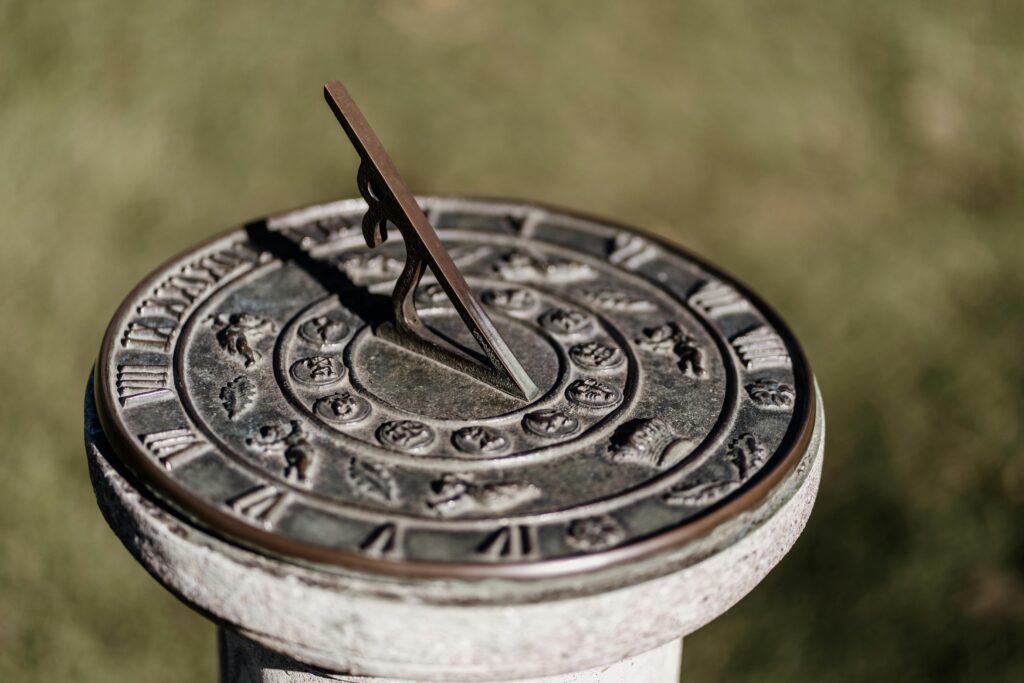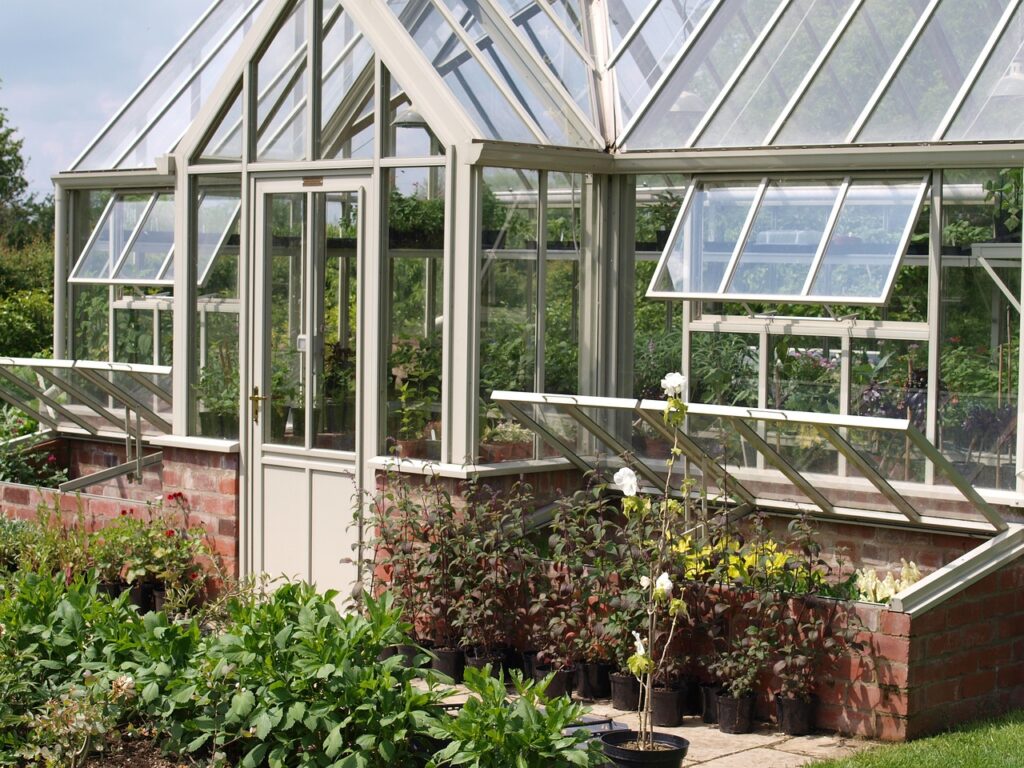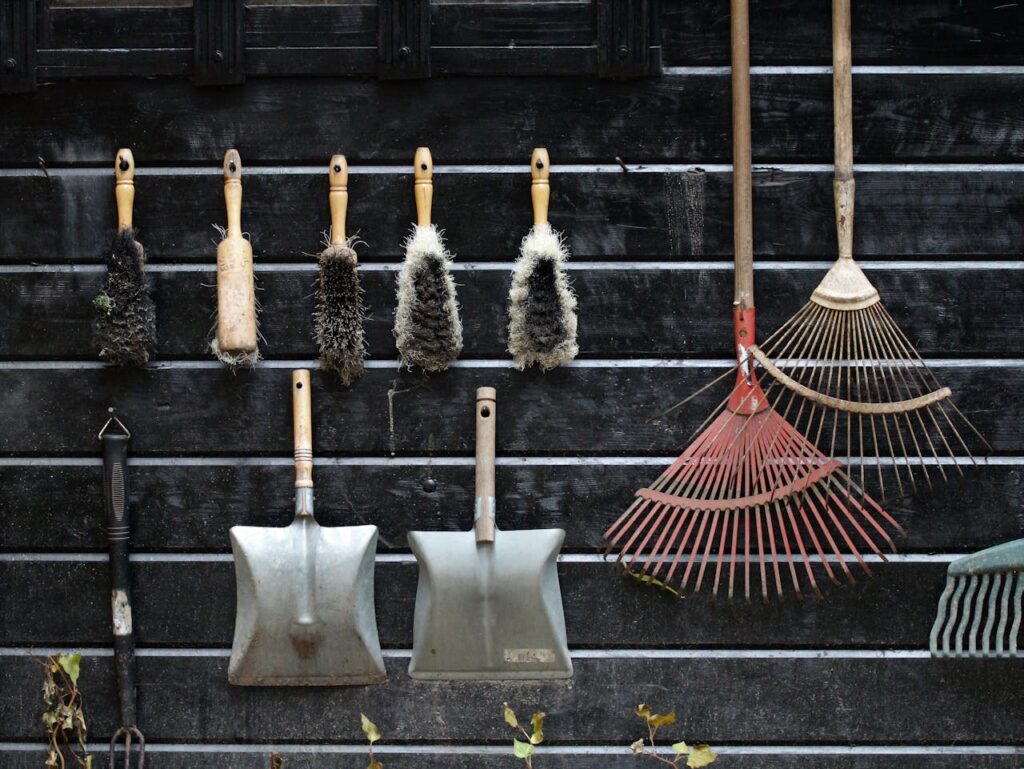Sundials are timeless garden ornaments that date back to ancient Greece and have been used for centuries as a way of telling time. They consist of a flat, circular plate that is engraved with the hours of the day and a vertical gnomon or rod that casts a shadow on the plate. The position of the shadow changes with the movement of the sun, indicating the time of day. Today, sundials are popular garden decorations that not only serve as practical timekeepers but also add aesthetic value to outdoor spaces. In this blog, we will discuss the uses and benefits of a garden sundial in your garden.
As an Amazon and ebay Affiliate we may earn a commission off any purchases made through our links. This won’t affect the price you pay.

Garden Sundials – Some Ideas
Uses of Sundials in the Garden
1. Telling Time
One of the most obvious uses of a sundial is telling time. In the absence of digital clocks, sundials were used to know the approximate time of the day. Even today, sundials can be used to tell the time when digital watches or phones are not available.
2. Garden Decoration

Apart from the functional use of telling time, sundials can be used as beautiful garden ornaments. They come in a variety of shapes, sizes, and materials, ranging from classic granite or brass to modern stainless steel or colorful hand-painted ceramic pieces.
3. Symbolic Representation
Sundials can also serve as symbolic representations of time, seasons, and the cycles of life. For instance, some have quotes or inscriptions that talk about the passing of time or the beauty of nature. Others have decorative motifs like the sun, moon, or stars that represent the movements of the celestial bodies.
Benefits in the Garden
1. Low maintenance
They require little to no maintenance, which is a great benefit. They have no batteries to change and no wires to replace. There are no settings to adjust.
2. Eco-friendly

3. Educational Tool
They can be an educational tool for children and adults alike. They offer a hands-on way of learning about astronomy, geography, and physics. Observing and tracking the movements of the shadow can be a fun and engaging way of learning about the earth’s rotation and the tilt of its axis.
4. Conversation Piece
If you have a sundial in your garden, chances are it will become a conversation piece among your friends, family, and visitors. Sundials are unusual and intriguing objects that draw attention and spark conversations about their history, design, and function.
5. Peaceful Ambiance
Sundials can add to the peaceful and calming ambiance of a garden. They are a reminder of the natural rhythms of life and can create a sense of tranquility and contentment in the observer.

Tips for buying and installing
If you’re considering purchasing a sundial for your garden, here are some tips to keep in mind:
Style
Choose a style of sundial that complements the overall aesthetics of your garden. For instance, if you have a classic formal garden, opt for a traditional brass sundial, granite or bronze sundial. If you have a modern garden, a stainless steel or colorful ceramic design might be more appropriate. If you can find an antique sundial, you won’t look back
Size

Placement
Choose a spot that receives ample sunlight throughout the day and place it on a stable, level surface and facing true north if possible. Keep in mind that trees or other tall objects may cast shadows on the sundial, affecting its accuracy.
Installation
Installing a sundial is relatively easy. To start, dig a hole in the ground and fill it with concrete. Another option would be to install a pedestal that is anchored to the ground. Once the base has set, put the sundial on top and adjust the angle of the gnomon to align with true north. Make sure the sundial is level and is not wobbly.
Using garden sundials – the how and why
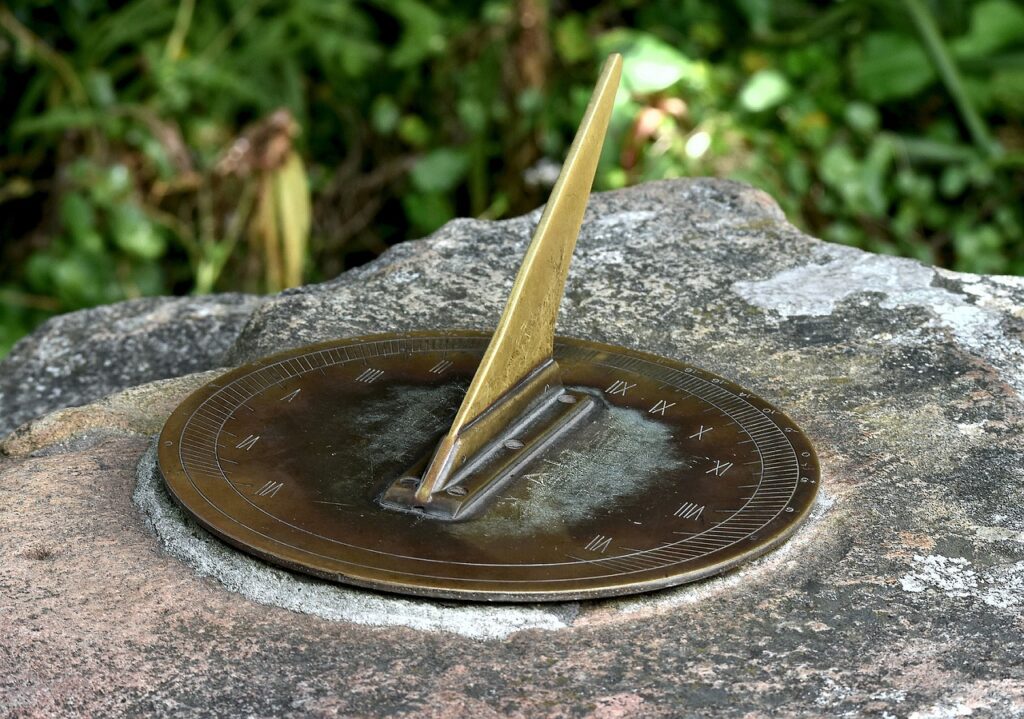
In our world of digital clocks and smartphones, you might think timekeeping has become as easy as pie—if pie were a mathematical equation, that is. However, there’s a charm in reading time using an outdoor sundial, a simple yet intricate method that has been around since ancient civilizations decided to embrace the sun a bit more than most of us do in the winter months. Luckily you don’t need an ancient sundial to be accurate.
The Basics of a Sundial
At its simplest, a sundial is a device that uses the position of the sun to tell time. It consists of a flat surface (the dial) marked with hours and a stick or triangular blade (the gnomon) that casts a shadow. As the sun travels across the sky, the shadow moves along those hour markings, indicating the time of day.
So, how do you read one? It’s a matter of letting your inner astronomer shine. Stand in front of the sundial, ensuring that the gnomon is pointing toward true north (not just the direction in which you usually find crème brûlée). As the sun moves, the shadow will indicate the hour. Simple, right? Well, here comes the fun part—reading a sundial isn’t always straightforward!

Reading the Time
1. Check the Orientation: Make sure your sundial is set up correctly. The gnomon should point towards true north—not magnetic north, as the difference can confuse the uninitiated timekeeper. You can use your smartphone compass to help you out, but remember, a sundial is not a GPS!
2. Adjust for Daylight Savings: Depending on the time of year, daylight savings might throw a curveball into your sundial reading. Generally, sundials reflect solar time, not standard clock time. This means you might need to add or subtract an hour, depending on your location.
3. Watch the Shadows: As the sun rises and sets, the gnomon will cast shadows that move from one hour marking to another. Keep an eye on the shadow’s position. The trick here is not to squint too much; after all, the sun is not your enemy unless you forget your sunscreen.
4. Count the Hour Lines: Once you identify where the shadow falls, simply count the hour lines to determine the approximate time. Most sundials measure in 15-minute increments, but some fancy models may have finer markings for more precise readings—perfect for those who believe punctuality is next to godliness.
Seasons and Sundials
Interesting trivia: sundials do more than tell you it’s lunchtime when your stomach growls; they also visibly show the passage of the seasons. And they do this quite elegantly—almost as if they planned it.
1. Changes in Shadow Length: As the seasons change, the sun’s position in the sky alters how and where shadows fall on the dial. During winter, when the sun is lower, shadows are longer. In summer, the sun’s high position means shadows are shorter. This variation offers a gentle reminder to bundle up or break out the sunscreen!
2. Equinox Alignments: Some sundials come equipped with markings that account for equinoxes—the days when day and night are almost equal. If you’re a fan of celestial events, you can use your sundial to track those fleeting moments of balance.
3. Seasonal Adjustments: Depending on your latitude, you might find sundials with additional features illustrating the changing seasons. They might include decorations that resonate with seasonal themes—think leaves for fall or flowers for spring—adding a touch of artistry to your timekeeping endeavor.
Materials used To Make Sundials
The beauty of sundials is reflected not only in their functionality but also in their construction. These timepieces can be made from various materials, each lending its own charm and character.
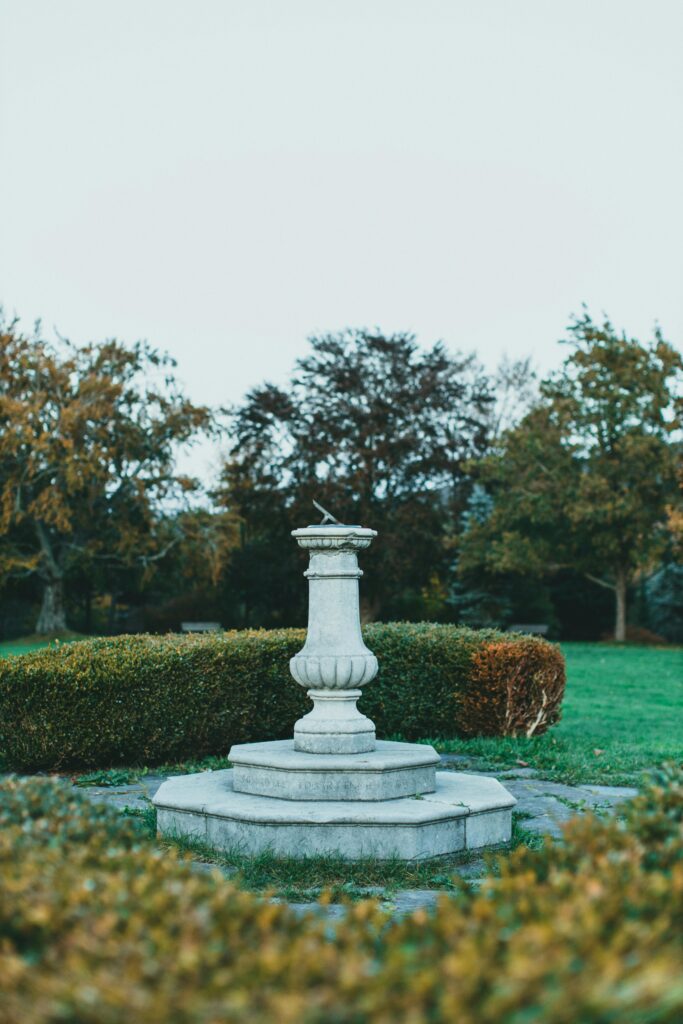
1. Stone: As enduring as a wise old tortoise, stone sundials have been popular for centuries. They’re robust, weather-resistant, and add an element of permanence to your garden. Plus, they can double as a conversation starter about ancient Roman engineering techniques.
2. Metal: Brass, copper, and stainless steel are common materials for sundials. They can provide a sleek, modern look. Metal sundials can also be quite luxurious, reflecting sunlight in glittering splendor, especially when designed with ornate features. Just be wary of placing them where they can’t resist the allure of rust!
3. Wood: Wooden sundials present a rustic charm, often incorporating intricate carvings and flourishes. Just be sure to treat them with weatherproofing agents to maintain their beauty—nobody wants to be reminded of the Forest of Doom when checking the time.
4. Plastic: For the more budget-conscious or those who want a sundial for the kids, plastic sundials are lightweight and colorful. With these, you can impart some old-world timekeeping knowledge without risking a splinter—great for outdoor adventures!
5. **Glass**: A more modern take, glass sundials offer a unique aesthetic experience. They can be beautiful while serving their purpose. Just ensure you don’t place them in a high-traffic area—because, let’s face it, nobody wants to be responsible for a sundial casualty.
Caring for Your Sundial
Maintaining a sundial is as simple as basking in the afternoon sun. Here are some quick tips:
1. Keep It Clean: Dust and debris can cloud the accuracy of your sundial. Give it a gentle wipe with a soft cloth or brush every now and then.
2. Watch for Obstructions: Ensure trees, buildings, or other structures don’t create shadows that confuse your timekeeping. Nothing like a shadow at 3 PM to send you into a minor existential crisis!
3. Seasonal Safety: If you live in a region that experiences harsh winter weather, bring your sundial indoors or cover it to protect it from the elements. Lake-effect snow doesn’t mix well with delicate machinery. Harsh weather can quickly turn a new sundial into an old sundial.

As an Amazon and ebay Affiliate we may earn a commission off any purchases made through our links. This won’t affect the price you pay.
Gardens Sundials – Wrapping Up
Sundials are one of the classic garden accessories. Use garden sundials to complement bird baths, bird feeders, stepping stones and other garden hardware. They are low-maintenance, eco-friendly, and can be an educational tool for children and adults alike. Garden sundials create a peaceful ambiance and can be a conversation piece among visitors. Buy a sundial, you won’t look back.
